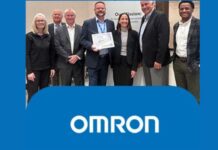We are seeing quick evolution of storage devices and with passage of time the energy density of battery packs have gone up drastically. Earlier we used to see bulky flat plate lead acid batteries with 350 cycles then came tubular batteries, still bulky but number of cycles improved.
Maintenance was a big issue in remote areas as water used to evaporate fast out of electrolyte while discharging under hot conditions. The issue was bigger at solar sites which were in remote rural areas. In lead acid batteries, gravity of electrolyte play a very vital role and most of the staff maintaining these batteries either used home water with high chloride content thereby damaging basic properties of sulphuric acid or they were overfilling the battery cells thereby reducing the gravity of particular cell. All this would lead to early failure of cell or battery or would give issues with back up of battery. Cell balancing was another big issue in lead acid batteries.
As time passed valve regulated lead acid VRLA batteries came in to address the issues of topping up and were known as SMF sealed maintenance free batteries in common parlance. Last few years saw better technologies of NiMh, Carbon, Graphene, NaS, Vanadium Flow, Fuel cells, Super Capacitors, Lithium and many more. Individual cell voltage, energy density and cycle life played a vital role in evolution of all these batteries. Scientists are working tirelessly to develop economically better version of battery with long life and light weight. This is very important for electric vehicle segment as a light weight battery can help in reducing overall weight of vehicle which in turn would add to more mileage and higher efficiencies.
Carbon & Graphene batteries worked well in Europe as Stop-Start battery but it was used to improve overall efficiency of vehicle in mild hybrid vehicles. World is busy working on efficient electric vehicles with high mileage and fast charging features. Here we see Lithium with NCM technology has highest energy density and most players are working on different combinations of NCM like 1:1:1, 8:1:1 etc. Still the safest technology is LiFePO4 which pass safety test of AIS 048 but NCM it depends more on combination of three metals. The cell size of 18650 or 26650 is same for the cell but LFP cell with 3.2v would have less energy density as compared to 3.7v of NCM in same space.
At the same time safety is compromised to some extent with high energy density. Another issue with NCM is low life cycle compared to LFP as most NCM cells comes from 500 cycles to 1200 cycles whereas LFP comes from 2000 cycles to 4000 cycles. LTO another technology of lithium family could not do much in EV space but is good for MW level ESS. In case of LTO life cycle is 7000 to 10000 but cell voltage is only 2.4v so the energy density ratio is poor. We see fuel cell is also picking up well now and Japan has already established this technology well in its eco system.
China a late starter on fuel cells has also started aggressive program to promote Hydrogen based fuel cell and is focusing to develop large number of hydrogen based vehicles. Here the biggest advantage is lowest charging time as one need to just replace the hydrogen capsules in the vehicle which is not more than 45 seconds exercise. Its electrochemical device which generates electric power to drive, byproduct is water so no pollution at any level. So we have many battery technologies on radar as of now and a big revolution is seen in EV space. Countries wish to control high level of emission levels created by use of petroleum products and concerned organizations are working aggressively to promote clean and green energy. Let’s resolve to save the planet by using clean fuels.
Sunil Bhatnagar (Ex Pilot Indian Air Force) | Country Head of Energy Div. at Microlyte Energy Ltd. with 25 years’ experience in battery domain.
















